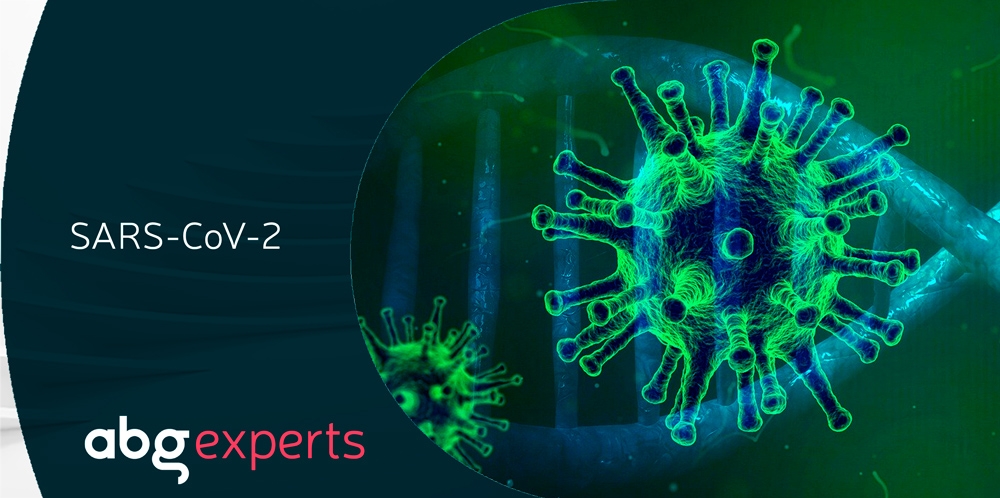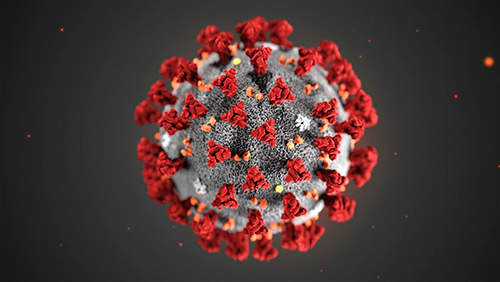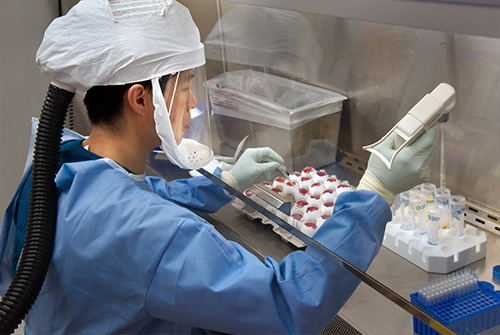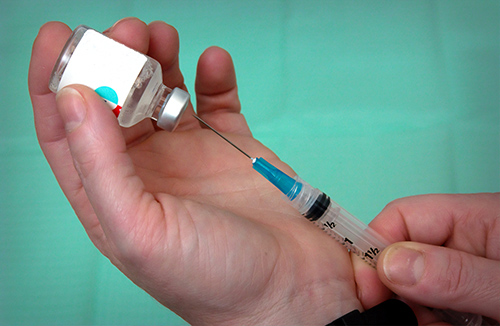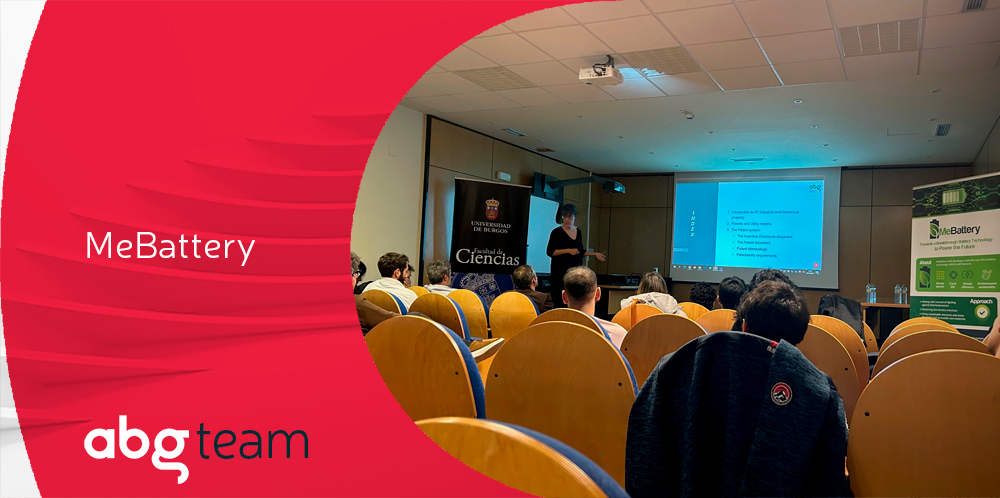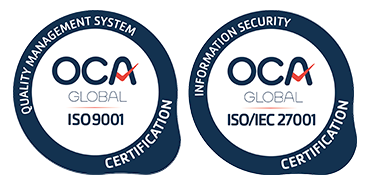During the past few weeks, the coronavirus epidemic has kept the world on alert and the interest generated by its news has been on the rise since the World Health Organization (WHO) declared a public health emergency of international concern on 30th January.
The alarm went off in December 2019, when an outbreak of pneumonia was detected in the Chinese city of Wuhan. Soon after, the cause was determined to be a new strain of human coronavirus, which was provisionally called 2019-nCoV or Wuhan coronavirus, and that has now been named SARS-CoV-2 has recently been proposed. Since then, related (and sometimes doubtful) information has spread in social media regarding the origin, transmission and treatment of this virus infection. Thus, speculation has been made, for example, about the existence of a miracle vaccine or a patent for the virus owned by Bill Gates.
In this article, we will mention some aspects that could be the object of patent protection after the discovery of a new strain of a virus.
Could Wuhan coronavirus be patented?
The answer to this question differs depending on the territory where protection is applied for, since there are divergences in national and regional laws on the patentability of biological material.
First of all, it should be noted that Wuhan coronavirus is a wild-type virus strain, i.e., a virus found as such in nature, and has not been genetically modified.
European Patent Office and virus patentability
The European Patent Office considers that biological material which is isolated from its natural environment (as it is the case in SARS-CoV-2), or produced by means of a technical process, is patentable even if it previously occurred in nature.
Therefore, a viral strain isolated from its host will be patentable in the member states of the European Patent Organisation, provided that the strain meets the patentability requirements:
Novelty
The strain of the virus must be new, i.e., shall not have been disclosed or made available to the public by any means prior to the filing date of the patent application. This implies that patent protection will not be granted in Europe if, for example, it was previously deposited in a public collection, or if its nucleic acid sequence was disclosed in a scientific paper, a poster, a presentation at a conference or a database before filing the application.
Inventive step
The strain of the virus must involve an inventive step, it means that, having regard to the state of the art, it must not be obvious to a person skilled in the art. After the development of automated sequencing techniques, the mere sequencing of a gene is no longer considered inventive, but a routine technique.
In practice, to meet this requirement, the isolation of a new strain of a virus must be accompanied by the discovery of a technical effect or unexpected advantage with respect to other known strains, or the overcoming of a technical prejudice.
Industrial application
The strain of the virus must be susceptible of industrial application, i.e., it can be used in any kind of industry. If the virus is defined by its genomic sequence, the patent application must describe a specific, substantial and credible utility for this sequence, for example, for the production of a vaccine. It is not enough to make a speculative reference regarding its possible uses. When a gene sequence is used to produce a protein, it is necessary to specify which protein is produced and what function it has.
The virus may be defined by its genetic material, and the same patent application may include claims directed, among others, to:
- a vector comprising the nucleic acid of the virus,
- cells and pharmaceutical compositions comprising said virus,
- antibodies targeting the virus proteins,
- in vitro methods for diagnosing virus infection, and
- using the virus as a vaccine or in the treatment or prevention of an infection.
USPTO and virus patentability
However, in other jurisdictions, such as the United States, products of nature not modified by humans are not eligible for patent protection. That is the case of a wild-type virus strain. Therefore, nowadays, it would not be possible for the United States to grant a patent for Wuhan coronavirus or for its isolated genes.
Nevertheless, protection is possible for viruses that differ structurally from the wild-type virus, virus-like particles (VLPs), or viruses obtained by recombinant DNA technology. For example, a genetically modified virus including a gene sequence that is not present in the wild-type strain of the virus could be patentable in the United States. As a result, a live attenuated vaccine based on a virus whose gene sequence includes a mutation that reduces its virulence could be protected in the United States. Diagnostic kits containing reagents that are not found as such in nature may also be protected.
The coronavirus SARS-CoV-2 or Wuhan coronavirus
Coronaviruses are a group of RNA viruses that includes at least 20 pathogenic species. Most of them affect animals, but others can infect humans.
In human beings, coronaviruses cause respiratory conditions, including Severe Acute Respiratory Syndrome, caused by the SARS-CoV virus, which hit several countries between November 2002 and July 2003; and Middle East Respiratory Syndrome, caused by the MERS-CoV virus, responsible for the virulent 2012 outbreak.
To date, only 7 strains of human coronaviruses are known. The last of them, the recently discovered in Wuhan (SARS-CoV-2), has turned out to belong to the Betacoronavirus genus, with a nucleotide sequence showing approximately 80% identity with the SARS-CoV virus sequence. The disease caused by this virus has been officially named COVID-19.
Has Wuhan coronavirus been patented yet? Coronavirus Patents
In recent days, numerous news about different patents protecting Wuhan coronavirus have been published, but, finally, it has been shown that those patents claim other coronaviruses. Some of them are:
Patent with publication number EP 3 172 319 B1
Filed by The Pirbright Institute and granted by the European Patent Office. This patent actually protects an attenuated coronavirus comprising a variant of the replicase gene, obtained from the avian infectious bronchitis virus, belonging to the Gammacoronavirus genus, other than Wuhan’s coronavirus;
Patent with publication number EP 2 898 067 B1
Granted by the European Patent Office on 15 January 2020. This patent protects the MERS-CoV virus, as well as in vitro methods for diagnosing infections caused by this virus and the use of the MERS-CoV virus for the treatment or prevention of these infections.
Patent with publication number US 7,220,852 B1
Granted in the United States, although it is no longer in force. This patent actually protects the nucleic acid sequence of the SARS-CoV virus, and was granted in 2007, when the U.S. Patent and Trademark Office still considered genes patent eligible.
What about Wuhan coronavirus?
The first genomic sequences of Wuhan coronavirus were made public this January. Therefore, if there is a patent application for the new coronavirus, it should have been filed before the publication of its sequence to meet the novelty requirement.
On the other hand, patent applications are published 18 months after they have been filed. During that period the application is confidential to the patent office. Thus, we will have to wait until the second half of 2021 to find out if there is a Wuhan coronavirus patent application. In 2003, when the SARS-CoV virus was discovered, several institutions were quick to unilaterally file patent applications for the total or partial sequence of the coronavirus genome.
Diagnostic methods, vaccines and antivirals for the treatment of coronavirus and Intellectual Property
Many national laws, including European patent law, recognize the patentability of in vitro diagnostic methods, i.e., carried out on a biological sample previously isolated from the patient. Diagnostic methods developed after knowledge of the virus sequence could also be protected.
In this regard, it should be noted that many companies are racing to develop a specific diagnostic test for early detection of Wuhan coronavirus infection. One of the first to bring its kit to market has been the American company Co-Diagnostics, Inc. The reagents in this kit are designed based on technology previously patented by the same company in countries such as the United States, Australia and Mexico.
Currently, existing treatments for Wuhan coronavirus infection are symptomatic, but several clinical trials have already been launched with molecules that had shown antiviral activity against other coronaviruses, such as remdesivir; or against other families of viruses, such as lopinavir-ritonavir and interferon-alfa-2b.
Remdesivir is a drug developed by Gilead Sciences, a US biopharmaceutical company that holds several patents and patent applications for potential treatments of coronavirus infections. For example, the international patent application WO 2017/049060 A1, on behalf of this company, contains claims generically addressed to the use of remdesivir in infections caused by viruses of the Coronaviridae family, to which coronaviruses belong, and it has entered several countries where it is currently under prosecution. Meanwhile, the Wuhan Institute of Virology has stated that this January it filed a patent application to protect the use of remdesivir in the treatment of Wuhan coronavirus infection after verifying its effectiveness in vitro.
AIM ImmunoTech is another company that has tested the effectiveness of its star product rintatolimod (Ampligen®) in the treatment of Wuhan coronavirus infection and has filed patent applications to protect its use.
In addition, at least three biotech companies have announced their intention to develop a vaccine against Wuhan coronavirus: Novavax, Inovio Pharmaceuticals and Moderna Therapeutics.
We have recently known that the European Medicines Agency (EMA) has launched a plan to speed up development and approval of vaccines and antivirals for the prevention and treatment of SARS-CoV-2 coronavirus infection.
Throughout the development of a vaccine or antiviral treatment, intellectual property plays a very important role. The patent protection of each stage of development ensures a return on investment made by the innovator to demonstrate its effectiveness and safety, and obtain the marketing authorization. At the vaccine level, it is not only possible to protect the genomic sequence of the isolated virus that will serve as the basis for the development of the vaccine, but it is also possible to obtain patents for the production processes of the viruses, antigens for vaccines and, already in the last phase of development, adjuvants, compositions and dosage regimens of what will be the commercial product. The same situation appears on antivirals, where protection extends from the first product patents to the dosage form and their medical uses.
All this invites us to think that we will have effective treatments to curb Wuhan coronavirus very soon.


